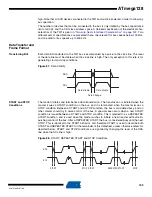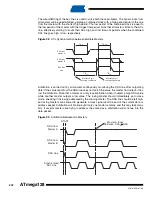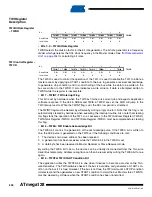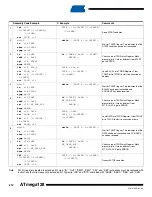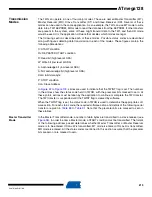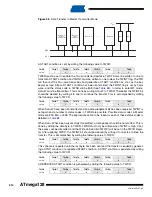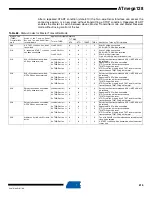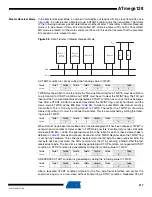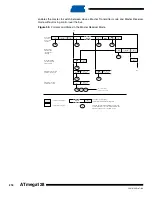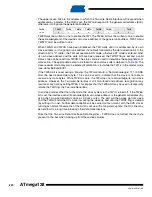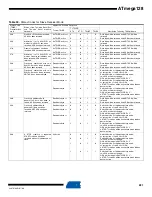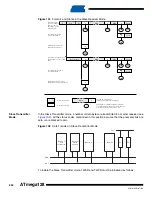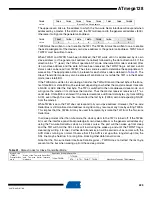
209
2467S–AVR–07/09
ATmega128
abstract, a more detailed explanation follows later in this section. A simple code example imple-
menting the desired behavior is also presented.
Figure 95.
Interfacing the Application to the TWI in a Typical Transmission
1.
The first step in a TWI transmission is to transmit a START condition. This is done by
writing a specific value into TWCR, instructing the TWI hardware to transmit a START
condition. Which value to write is described later on. However, it is important that the
TWINT bit is set in the value written. Writing a one to TWINT clears the flag. The TWI will
not start any operation as long as the TWINT bit in TWCR is set. Immediately after the
application has cleared TWINT, the TWI will initiate transmission of the START condition.
2.
When the START condition has been transmitted, the TWINT flag in TWCR is set, and
TWSR is updated with a status code indicating that the START condition has success-
fully been sent.
3.
The application software should now examine the value of TWSR, to make sure that the
START condition was successfully transmitted. If TWSR indicates otherwise, the applica-
tion software might take some special action, like calling an error routine. Assuming that
the status code is as expected, the application must load SLA+W into TWDR. Remember
that TWDR is used both for address and data. After TWDR has been loaded with the
desired SLA+W, a specific value must be written to TWCR, instructing the TWI hardware
to transmit the SLA+W present in TWDR. Which value to write is described later on.
However, it is important that the TWINT bit is set in the value written. Writing a one to
TWINT clears the flag. The TWI will not start any operation as long as the TWINT bit in
TWCR is set. Immediately after the application has cleared TWINT, the TWI will initiate
transmission of the address packet.
4.
When the address packet has been transmitted, the TWINT flag in TWCR is set, and
TWSR is updated with a status code indicating that the address packet has successfully
been sent. The status code will also reflect whether a slave acknowledged the packet or
not.
5.
The application software should now examine the value of TWSR, to make sure that the
address packet was successfully transmitted, and that the value of the ACK bit was as
expected. If TWSR indicates otherwise, the application software might take some special
action, like calling an error routine. Assuming that the status code is as expected, the
START
SLA+W
A
Data
A
STOP
1. Application
writes to TWCR
to initiate
transmission of
START
2. TWINT set.
Status code indicates
START condition sent
4. TWINT set.
Status code indicates
SLA+W sendt, ACK
received
6. TWINT set.
Status code indicates
data sent, ACK received
3. Check TWSR to see if START
was sent. Application loads
SLA+W into TWDR, and loads
appropriate control signals into
TWCR, making sure that TWINT
is written to one, and TWSTA is
written to zero.
5. Check TWSR to see if SLA+W
was sent and ACK received.
Application loads data into TWDR,
and loads appropriate control signals
into TWCR, making sure that TWINT
is written to one.
7. Check TWSR to see if data
was sent and ACK received.
Application loads appropriate
control signals to send STOP
into TWCR, making sure that
TWINT is written to one
TWI bus
Indicates
TWINT set
Application
Action
TWI
Hardware
Action





